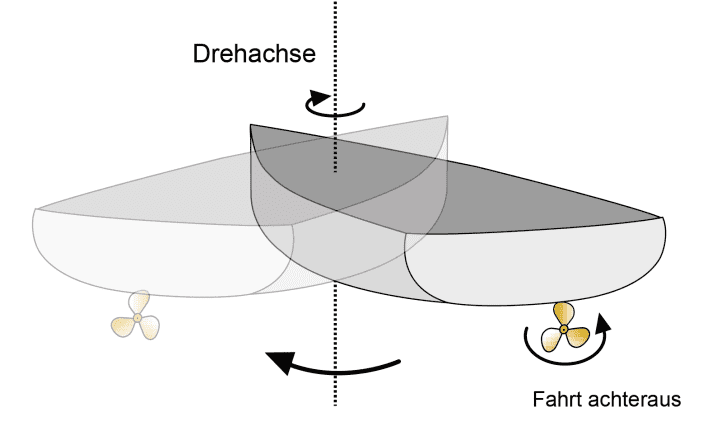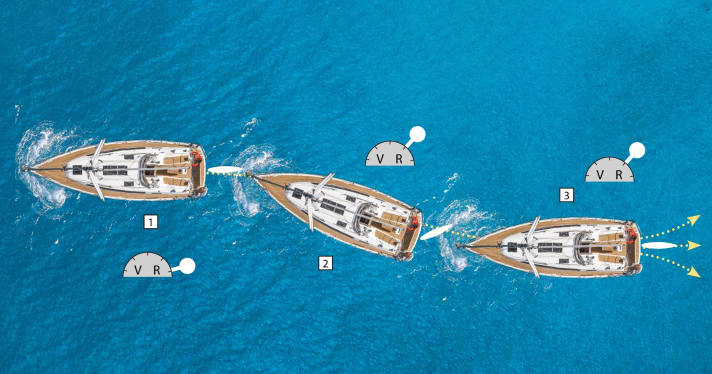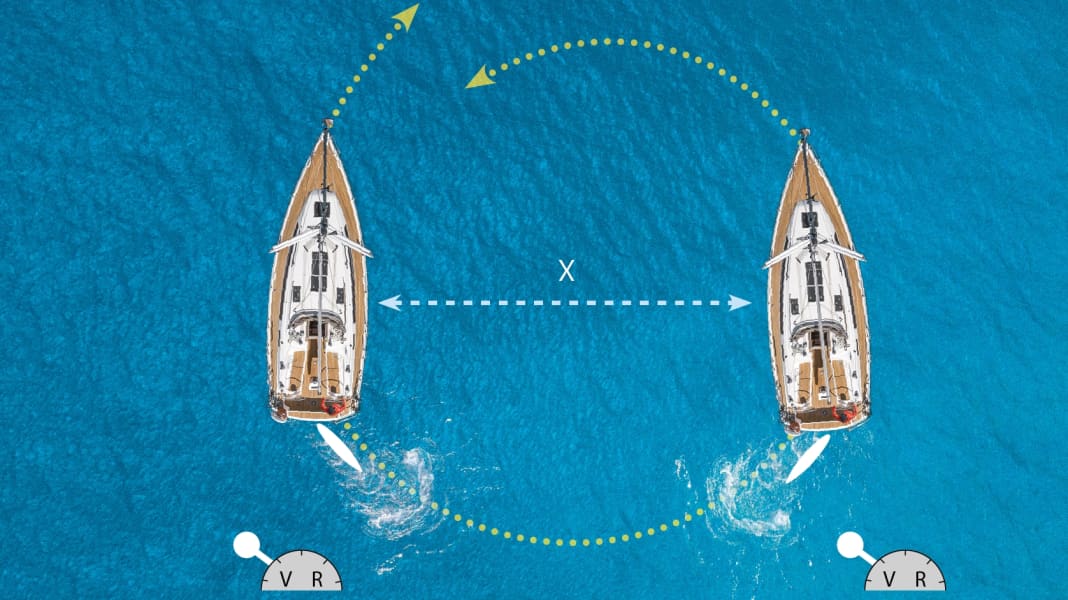
Start and stop
The acceleration and stopping of the yacht depends on the propeller effect, the design (fixed or folding prop) and the weight of the yacht, the motorisation and the position of the propeller. Is the rudder being directly driven so that there is already a steering effect when stationary? To do this, from a standing position with the rudder amidships, give a short, strong push and observe the reaction. Once the yacht has reached three to four knots, stop with full thrust aft, giving the gearbox some time to change gear. Observe the reaction again. If the stern breaks away, how long is the run-out distance X to a standstill?
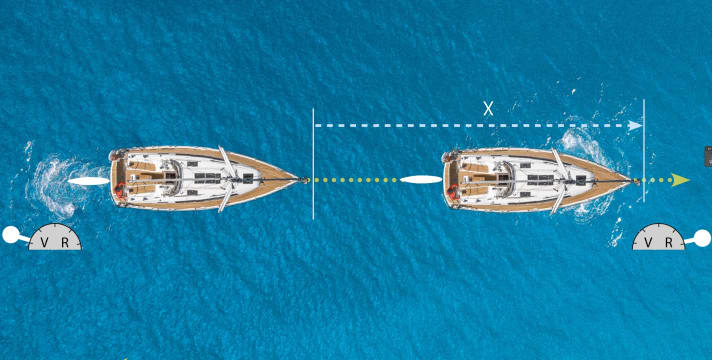
Determine turning circle
What is the diameter of a full circle when travelling ahead? It is important to know this, for example when it comes to the question of whether a boat can turn in a mooring lane without stopping. This can be found out very easily in front of the harbour with a few test circles. It is important to know whether a wheeling effect is to be expected. With a right-turning prop, the stern of the yacht would be shifted to starboard when travelling ahead, which supports the turning over port and makes the circle smaller than over starboard. To determine the diameter of a full circle, the rudder must be maximised. The thrust can be varied, which helps to reduce the turning circle. Short, powerful thrusts using the control lever generate pressure on the rudder blade and support the rotation without travelling much distance.
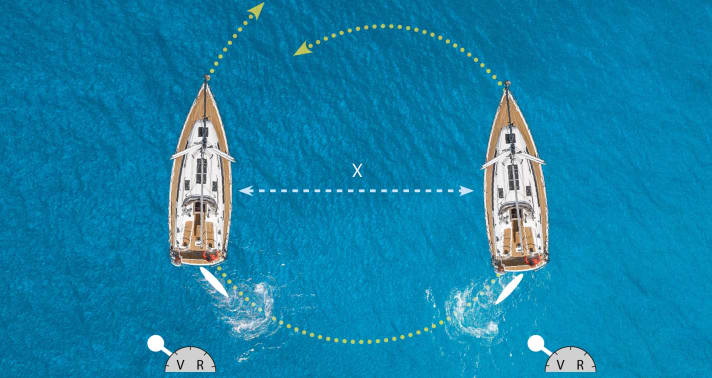
Determine wheel effect
Yachts with a shaft drive usually have a stronger wheeling effect than those with a saildrive because the propeller is further aft and the lever to the yacht's centre of rotation is longer. The effect is also generally stronger with fixed pitch propellers than with folding propellers. The shape of the hull and frame also play a role. Firstly, it is important to know in which direction the prop turns when travelling forwards and accordingly aft. This can only be determined in advance with a shaft system on the shaft, otherwise in practice. A prop that turns clockwise when travelling forwards turns anti-clockwise when travelling aft and will shift the stern to port. The extent of the effect can be determined using the method below. The effect can be used for manoeuvres, as shown below.
